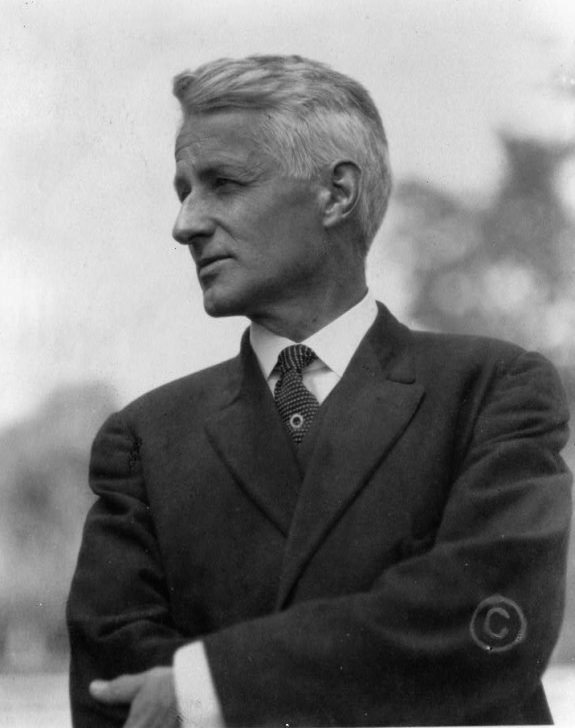Related Post
- Buy Tickets for The Constitutional Walking Tour of Philadelphia – See 20+ Sites on a Primary Overview of Independence Park, including the Liberty Bell and Independence Hall
Just steps off of The Constitutional Walking Tour is one of our favorite spots for art lovers – Maxfield Parrish’s Dream Garden at the Curtis Center.
Designed by Maxfield Parrish
Constructed by Tiffany Studios
Favrile glass mosaic
The Artist - Maxfield Parrish (1870-1966)
Born in Philadelphia and educated at the Pennsylvania Academy of Fine Arts, Maxfield Parrish is best known for his idyllic landscapes and storybook illustrations. Parrish served on a committee convened by Cyrus Curtis and Edward W. Bok of the Curtis Publishing Company to commission a mural for the lobby of their spectacular new building – the Curtis Center. After the first three artists chosen to paint the mural died, Parrish was asked to develop the design. At the same time, Bok decided that the mural would be executed by Tiffany Studios as a glass mosaic.

The Curtis Center - A Publishing Empire
The Curtis Center is where publisher Cyrus Curtis founded his first magazine, the Ladies Home Journal, in 1883. The important publisher would also publish The Saturday Evening Post, which was once the most widely circulated weekly magazine in America. In the lobby of the Curtis Center, “The Dream Garden”, a 15’x49’ glass mosaic masterpiece, is proudly displayed.
It’s Size
The mural is fifteen by forty-nine feet and has embodied the publisher’s desire to make art accessible to a wide public.
The Vision
The artist envisioned fantastical spaces where a visitor would chance upon places of tremendous beauty and solitude, improved by careful placement of foliage and flowers, large classical urns, reflecting pools and fountains, walkways and steps. The masks in the foreground evoke Parrish’s love of theater, and lend the character of a stage to this ideal landscape. Parrish’s design was inspired by the real gardens he had built at his summer home, The Oaks, in Cornish, New Hampshire.
How It’s Made
The mosaic’s images are rendered in favrile glass following a complex hand-firing process developed by Tiffany to produce over 100,000 pieces in 260 colors. Most of the glass was set in 24 panels and Tiffany’s New York studios. Thirty artisans worked for over a year on the mosaic, and the installation of the panels in this location took six months.
Why It’s Unique
The finished work was held by art critics as a “veritable wonder piece” at the official unveiling in 1916. The amazing variety of opaque, translucent and transparent glass, entirely lighted from the lobby achieves perspective affects that have never been duplicated.
The Potential Sale, Move and Casino Controversey
In 1998, after the death of John W. Merriam who had owned the Dream Garden, Philadelphia came close to losing the Dream Garden. The proposed sale of the Dream Garden to casino magnate Steve Wynn and its’ relocation from Philadelphia to a Las Vegas casino caused a vigorous public outcry.
This caused the Philadelphia Historical Commission to designate the Dream Garden as a “historic object”, which made it more difficult for the Dream Garden to ever leave Philadelphia. The Philadelphia Inquirer wrote about the controversy saying that removing the Dream Garden from the Curtis Center to a casino was tantamount to “tearing out the ceiling of the Sistine Chapel for the highest bidder.”
In response, the Pew Charitable Trusts made a grant of $3.5 million to purchase a private beneficial interest, and the charitable beneficiaries of the estate of John W. Merriam -- Bryn Mawr College, the Pennsylvania Academy of Fine Arts, the University of the Arts and the University of Pennsylvania -- donated their beneficial interests with the result that the Pennsylvania Academy of Fine Arts became the sole owner and custodian of this historic and beloved work of art.
It’s Legacy
The Dream Garden can now permanently remain in its original location to delight Philadelphia residents and visitors alike. The Dream Garden will continue to fulfill Tiffany’s wish that “it may stand in the years to come for a development in glassmaking and its application to art.”
Visiting the Dream Garden in Person
It is worth noting that since the Dream Garden is located in an office and a new apartment building called Lyndon at Curtis, you need to make sure you visit during hours that the building is open.
Cost
Admission is free to see the Dream Garden.
Hours
Monday to Friday: 9AM-6PM
Saturday: 10AM-2PM
Note that these days and times are subject to change without notice.
Insider Info
The Dream Garden is located in the main lobby of the 6th Street entrance to the Curtis Center. Look for the row of magnificent marble columns that are just steps above 6th Street. Right above the columns, you will see “The Curtis Publishing Building” impressively carved into the stone. If you should find that the 6th Street entrance is closed during operating hours, you may want to walk around to the Walnut Street entrance.
Looking for a unique holiday card portrait this year, the Dream Garden serves as the perfect background for your family photo that you can use during the holiday season.
How to Get There
The Dream Garden is conveniently located on 6th Street between Chestnut and Walnut Streets. For guests of The Constitutional Walking Tour, it is a super easy walk since it is just 0.4 mile away from the National Constitution Center where all of The Constitutional’s tours begin and end. Just head South on 6th Street and walk less than a few blocks.
Additional Information
Dream Garden
Curtis Center
170 S. 6th Street
Philadelphia, PA 19106



